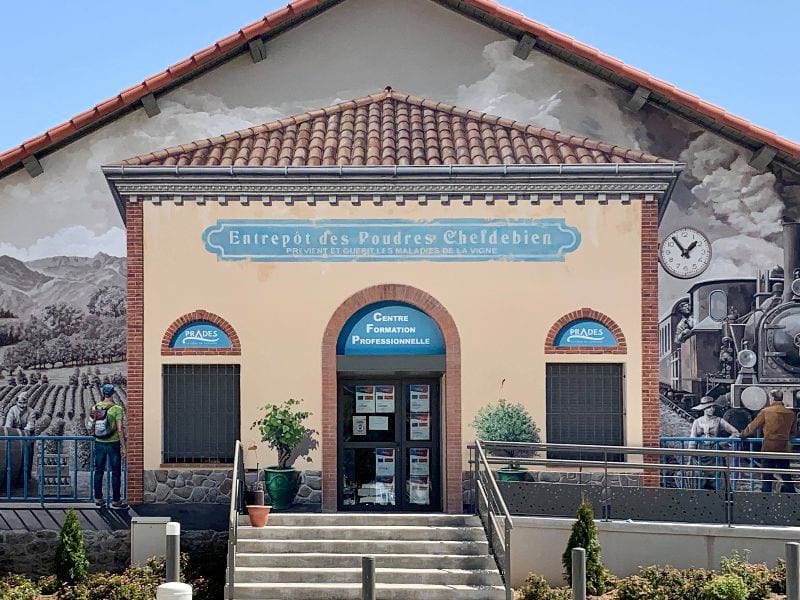by Simon Newman
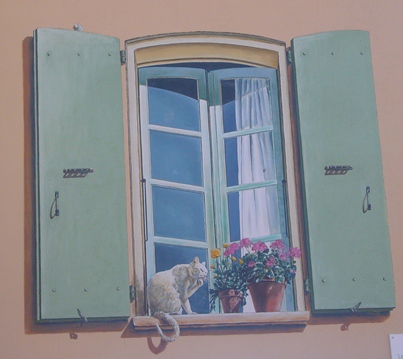
Wander around the vicinity of Le Boulou’s old Mairie (arguably this architecturally-underrated town’s most appealing quarter) and you’ll come across a delightful whimsy on the side of a nearby village house. The scene is of a cat on a window ledge and from a distance you’re really not quite sure. It’s not until you get nearer that you can be certain it’s a trompe l’oeil – that most charming of deceptions.
And while the cat and the flower pots are just a little too one dimensional to be anything else but an illusion, the window shutters are real. Aren’t they? More on that later. In the meantime, why do people create these extraordinarily grandiose works, and more to the point, how did the whole trompe l’oeil thing start in the first place?
Well, as in so many endeavours in the field of the arts, this clever visual trick can be traced back to those perennial suspects, the ancient Greeks. At least that’s the theory put forward by modern Greeks – though you don’t need to dig too far to find the same story claimed by Chinese, Persian, Roman, Turkish and Egyptian historians too.
There is however a common thread running through all of these claims; that of theatre.Drama productions in ancient times were frequently staged outdoors and exterior walls would be painted to give the effect of anything from battlefield carnage to bacchanalian romp (though in the case of the Romans, it’s hard to tell the difference.)
But it wasn’t until the technique of perspective had been fully mastered in the 15th century by Renaissance painters that the trompe l’oeil really took off. The use and deliberate misuse of perspective allowed the art of “bending reality” to be taken to new heights. And new heights quite literally – for one of the most famous examples of trompe l’oeil stands 100 metres high in the Jesuit Church in Vienna.
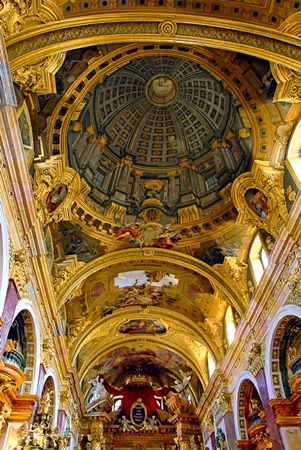
As you gaze upwards at Andrea Pozzo’s masterpiece, your eye takes in the beautifully frescoed ceilings and then on to the interior of the ornate wooden dome. But the latter is a complete illusion. Pozzo has so cleverly captured the rise towards the apex that from the church’s entrance end you’re completely fooled.
It’s only when you get to the chapel end that you realise that something is wrong – the angle of view doesn’t make sense any more. And that’s the great thing (some would say the essential thing) about the trompe l’oeil – the inclusion of a visual device, often a witty one, there to reveal the trick. Without it, that subtle-but-defining element of mischievousness is lost.
More recent examples can be seen in Hollywood productions of the 50’s and 60’s – both in real films as well as cartoons such as Tom and Jerry. The mouse pauses just long enough during the chase to paint the entrance to a tunnel on the wall – at which point the cat, in hot pursuit, heads straight for it and.… splat!
Then of course there’s the celebrated routine from “Singing in the rain” (no, not Gene Kelly’s pavement and umbrella sequence) when dancer extraordinaire Donald O’Connor appears to be running towards a corridor as if to exit the scene during the song “Make’m laugh.” But the corridor is actually a solid wall which he “runs” up, executing a back-flip of sublime perfection. It’s rumoured in some anorak quarters that the perspective of the corridor trompe l’oeil was skewed to disguise the wall’s lower half being angled sufficiently to give O’Connor a ramped launch into the gravity defying manoeuvre. Even if that were true (and we’ll never know – the evidence has long since been destroyed) then it would only serve to make the design of the trompe l’oeil even more ingenious.
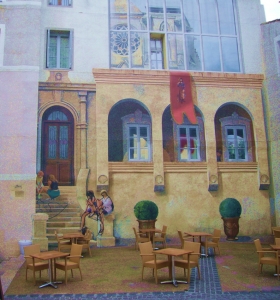
But back to the present – there are no end of fine examples of trompe l’oeil to be seen all over our region (see the Spring PO Life article on Maury) and Prades and a little further afield there’s the famous street scene in Montpelier where a fake window carries a reflection of the (very real) church opposite.
And if you’re in Le Boulou sometime, check out that cat on the window ledge – in particular take a critical look at those window shutters. The trick is revealed in the angle of the shadows.
There’s only one time of the day (assuming the sun is out) when it could be possible – though of course if you happen to be there at exactly that time, then who’s to say what is reality?
As Picasso put it, “Anything you can imagine is real” – a statement that’s both irrational and plausible at the same time. Rather like a trompe l’oeil.
MORE LOCAL TROMPE L’ŒIL….
…….in Maury

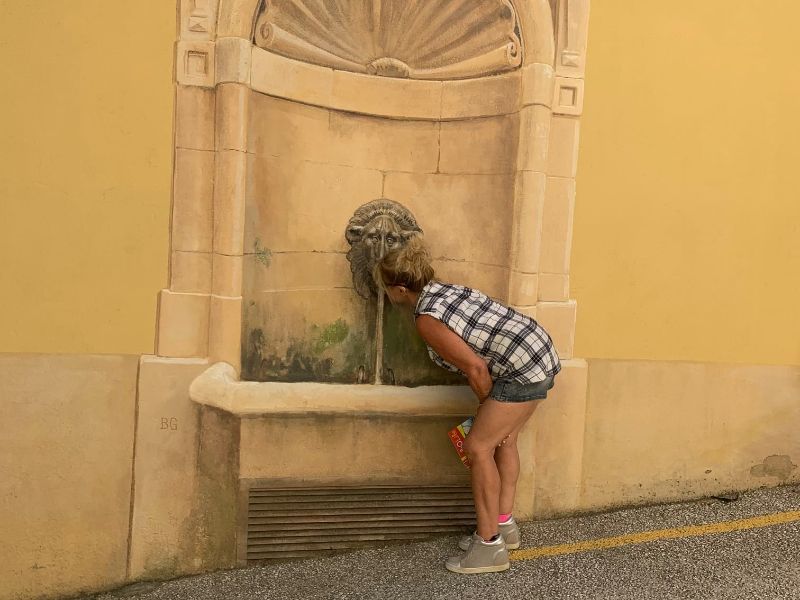
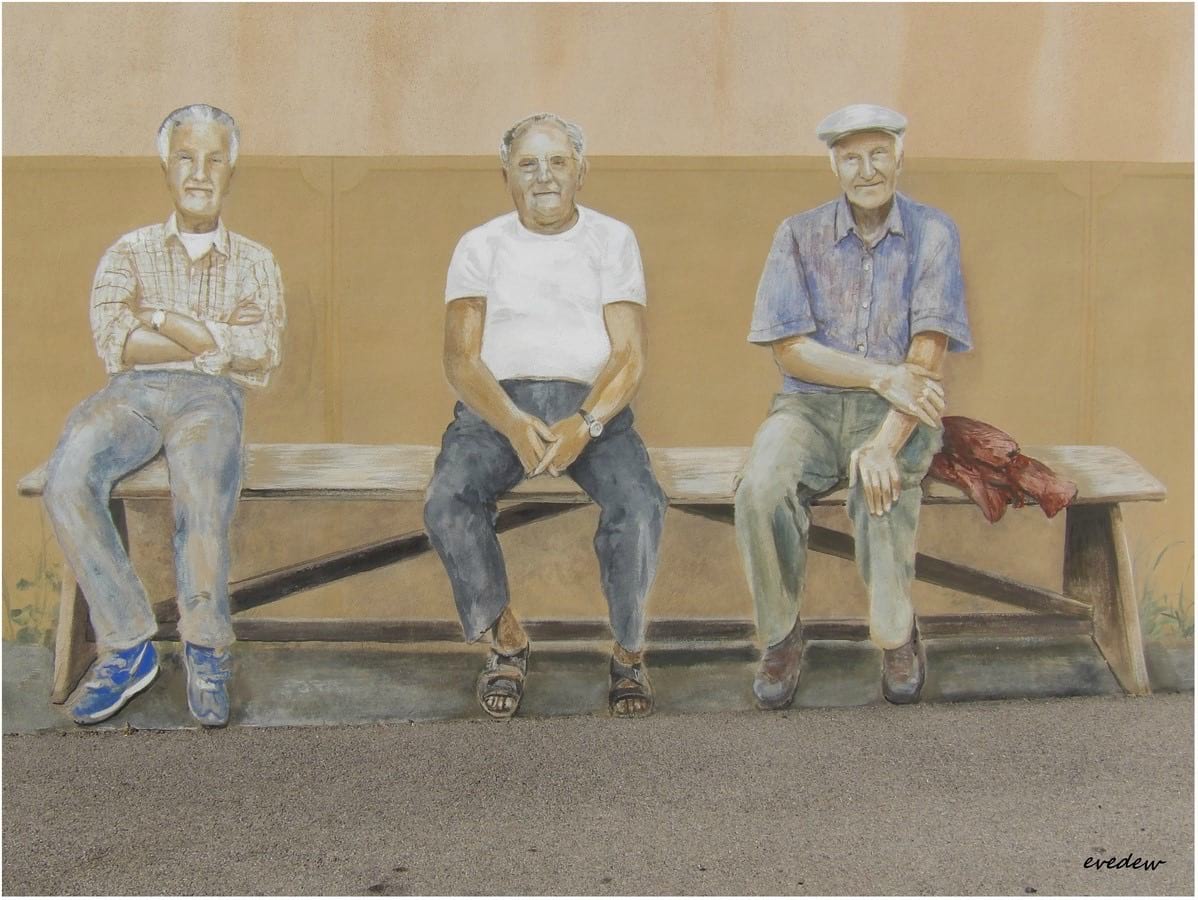
…..and Prades

